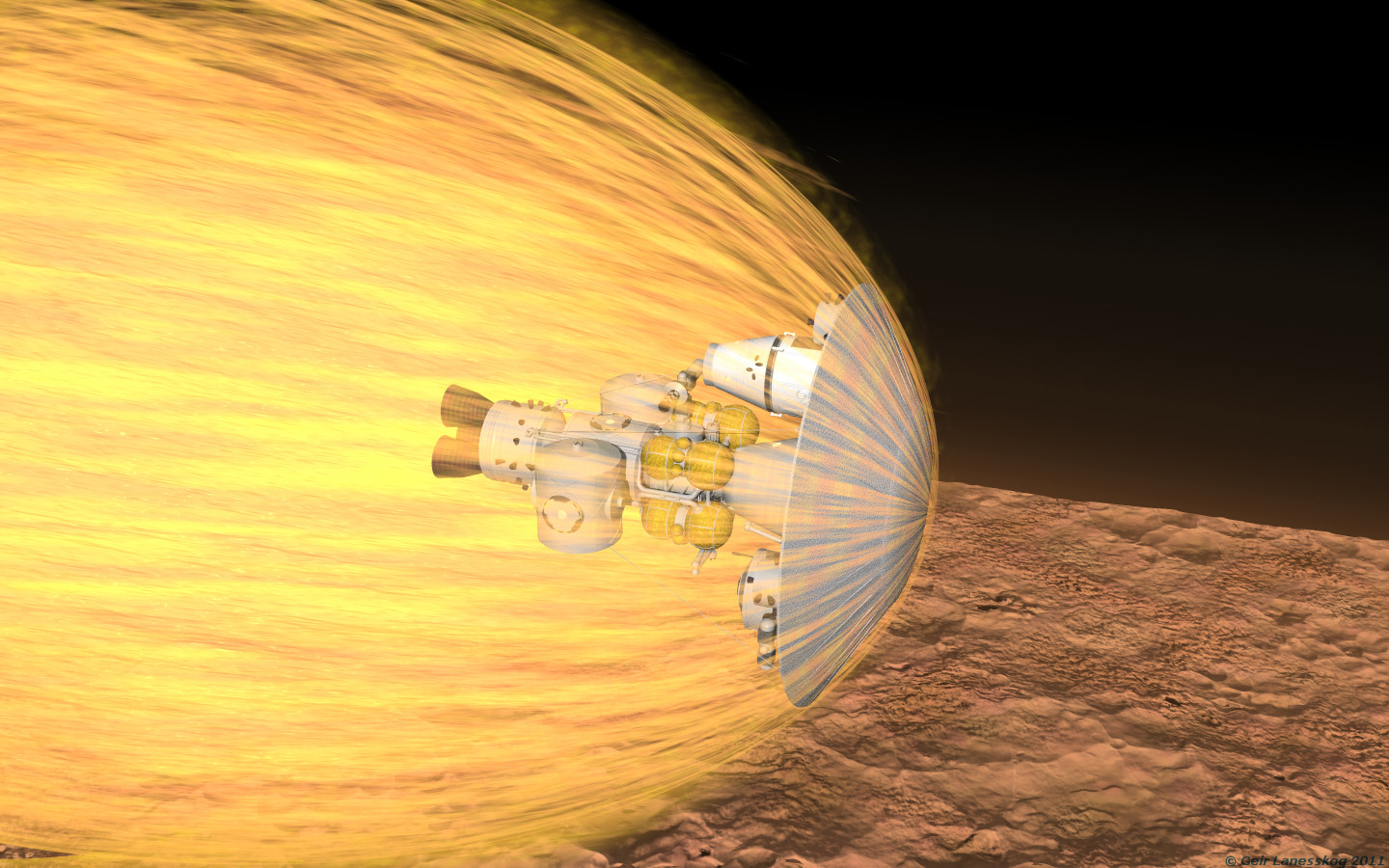
Coming In Hot
One disadvantage of a six month transit is that the vehicle arrives at Mars
with a greater velocity than a more energy efficient eight to nine month
transfer. During the dive through Mars's thin atmosphere, the
astronauts and vehicle will experience forces approach five times Earth gravity
as the vehicle slows enough to enter a transfer orbit toward the moon Phobos.
To survive this fiery ride above Mars, all booms have been retracted and the
Superdragon and Cargo Node modules have been firmly lashed to the aeroshield.
Eventually, the Lander, seen here as the cone expanding towards
the shield at the forward part of the stack, will separate to allow two
astronauts to spend a brief month on the surface of the Red Planet. In
subsequent expeditions, a separately launched habitat module (MarsHab) will land
directly on the surface of Mars, and the entire crew will be able to ride the
Lander down for an extended stay on Mars.
But as of the launch of Expedition One, only a small fraction of
Expedition Two, and no portion of MarsHab One have been funded.
The Universal Expeditions Foundation is counting on <u>you</u> for your
support. UXF is a non-governmental 501(c) tax except
organization dedicated to the expansion of the Human Species into the Universe.
All contributions are tax deductible to the full extent of the law.
Foundational and Estate planning services are available to all interested
parties.
--Excerpt from UXF promotional material, 2029.
All pages and images ©1999 - 2010
by Geir Lanesskog, All Rights Reserved
Usage Policy




![]()